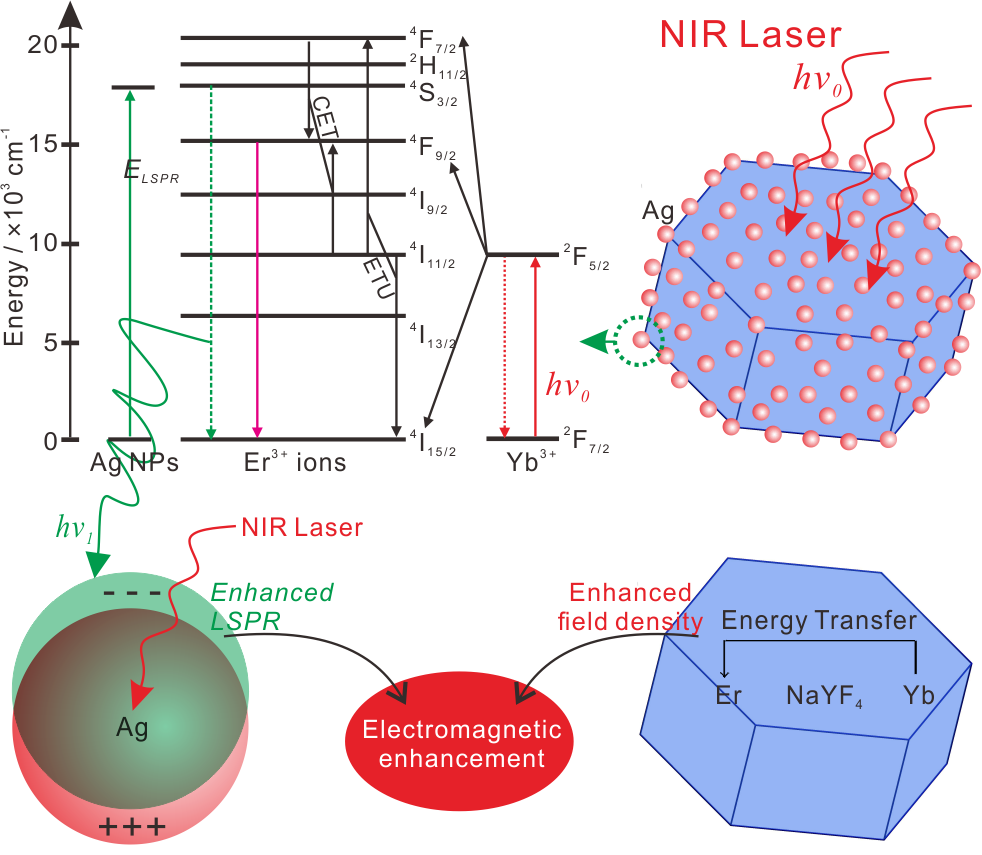It is known that Surface-Enhanced Raman Scattering (SERS) technique has become one of the most widely used spectroscopic tools for identification and detection of chemical and biological species and molecular imaging and monitoring. The excitation lasers used in most SERS studies are Ultra Violet (UV)/visible lights because Localized Surface Plasmon Resonance frequencies of Ag and Au nanostructures locate in the UV/visible range. However, the laser power of UV/visible light may damage the target molecules for the long illumination time. Therefore, it is still a challenge to develop the nanostructures which can not only well match the near-infrared excitation, but generate the high SERS enhancement under relatively lower levels of laser power.
Prof. Liangbao YANG’s study team from Institute of Intelligent Machines (IIM) within Hefei Institutes of Physical Sciences, Chinese Academy of Sciences (HFCAS) employs Up Conversion (UC) materials into SERS technique, which realizes sensitive detection under longer wavelengths and low-energy excitation. The study has been published in Journal of Materials Chemistry A (2015, 3, 14642-14650) and Analyst (2015, 140, 5268-5275).
Prof YANG’s study team synthesizes an UC micro-crystal (NaYF4:Yb,Er) decorated with Ag NPs (NaYF4:Yb,Er@Ag). UC emission materials can convert infrared radiation into visible light. NaYF4:Yb,Er@Ag shows good Raman enhancement and plasmon photocatalysis behaviors under NIR excitation with a relatively low laser power. Through a series of reasonable experiments, the role of UC materials in this composite substrate is unraveled. The study team also synthesizes another composite substrate NaYF4:Yb,Tm@TiO2@Ag, which can implement photocatalytic degradation of dyes molecular under non-Ultraviolet excitation. With virtue of monochrome laser lines, SERS analysis provides the direct evidence to prove the capability of UC-initiated non-UV photocatalysis and the improvement of the utilization of non-UV lights on TiO2. It turns out that this new photocatalytic platform can efficiently utilize different bands of the solar spectrum and new applications in SERS fields are found.
This study is supported by National Basic Research Program of China, National Instrumentation Program of China and National Natural Science Foundation of China.

Illustration of the relevant processes of energy transfer in UC@Ag particles and the local electric field enhanced by the LSPR of Ag NPs (Imaged by Honglin LIU)